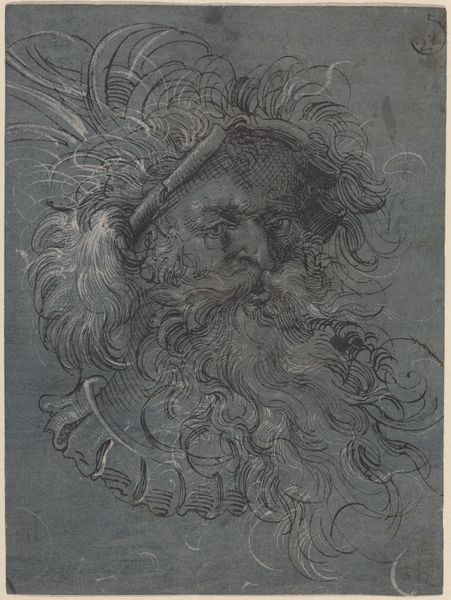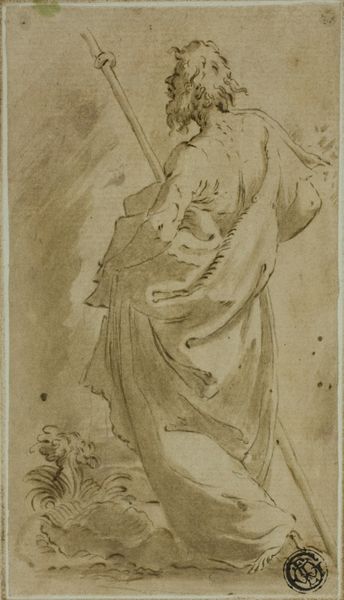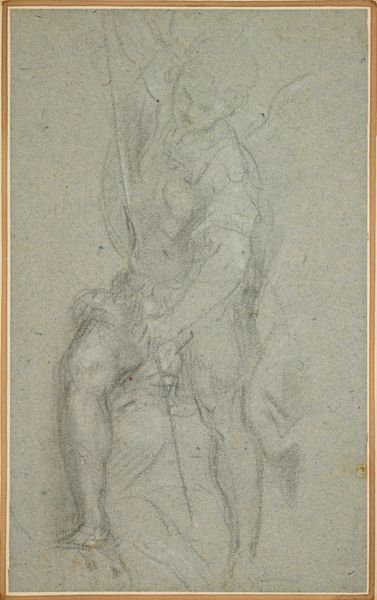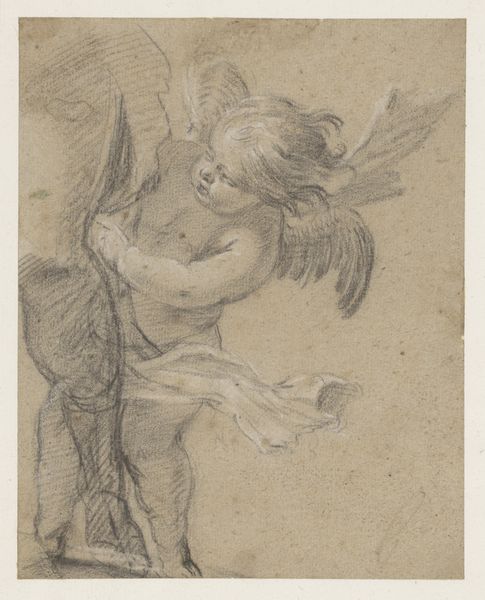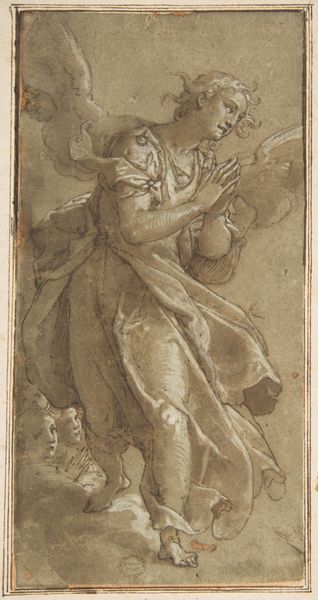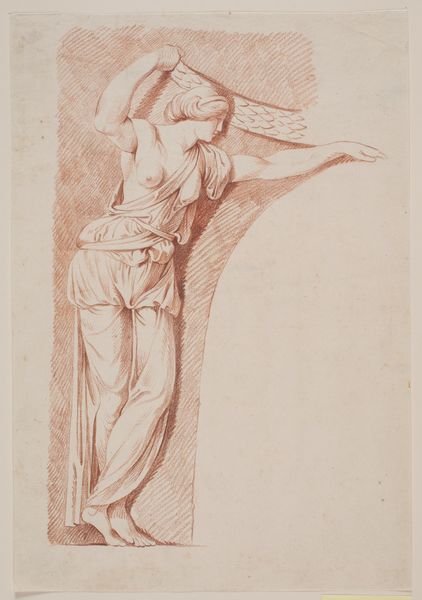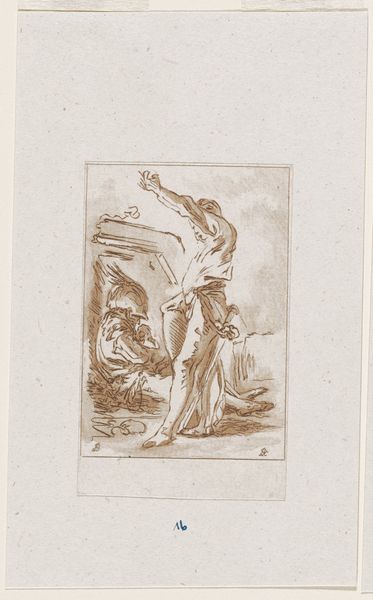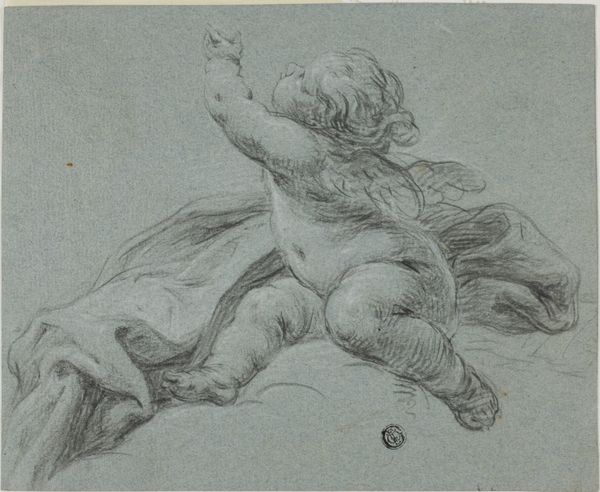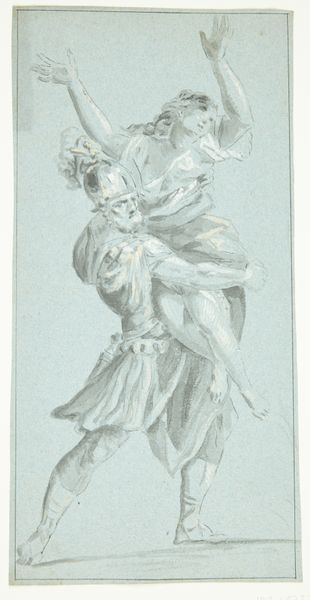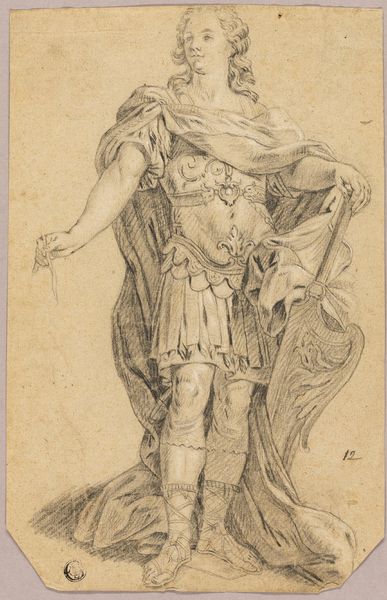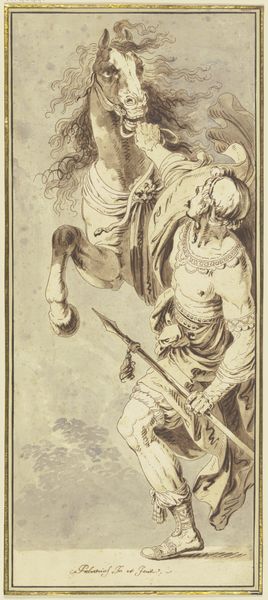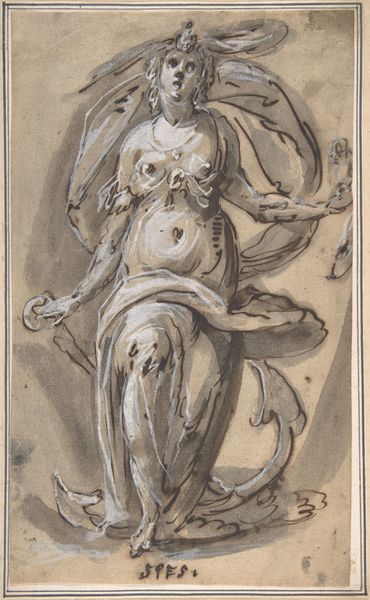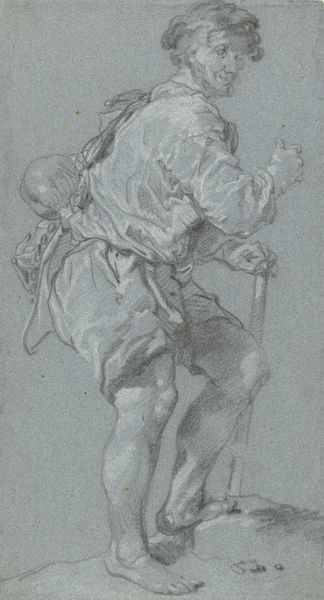
drawing, paper, pencil, chalk
#
drawing
#
baroque
#
landscape
#
figuration
#
paper
#
pencil
#
chalk
#
academic-art
Dimensions: 207 × 291 mm
Copyright: Public Domain
Curator: Immediately, I sense a dichotomy. This figure hovers between grace and severity. Editor: I agree, it's intriguing! What we are viewing is a drawing, dating to about 1756, by Stefano Pozzi. It’s called “Angel Holding Flowers and Scourge.” The medium is chalk and pencil on paper. Pozzi worked during the late Baroque and early Rococo periods. Curator: Flowers in one hand, a whip-like scourge in the other. What do you make of the juxtaposition? It seems purposefully contradictory. Is it peace or punishment she offers? Editor: That’s precisely what captures my attention. In this historical and social context, angels often serve as symbols of divine intervention and power, frequently used to reinforce established hierarchies. But there's an unsettling tension here. She is both gentle and forceful. Does she represent liberation or oppression? Who does this vision of an angel serve? Curator: I interpret the flowers as symbolic of redemption and the potential for renewal, offsetting the scourge’s implications of justice or penance. Throughout art history, flowers serve as transient metaphors, standing for fragile earthly beauty and innocence. Editor: I see your point, but let's consider what the "innocence" signifies, within this patriarchal religious framework. What does it require of us? Doesn’t salvation come at a price? I’m led to ask who gets to define what's innocent. Is the scourge an attempt to erase histories of oppression? Curator: Your emphasis on gender is apt; there's a vulnerability to her depiction despite her commanding pose. Note the delicacy of line used to depict her features; the paper's blue tint is itself symbolic of calm and peace, no? Perhaps she represents not worldly power, but inner strength and fortitude. Editor: Yes, the softness counters the harshness, offering room to rethink historical narratives about institutional authority. Instead of valorizing one interpretation, I believe this image pushes us to reconsider whose stories matter when talking about historical dominance. Curator: I concede; its complexity stems from not adhering neatly to any single symbolic reading. Pozzi coaxes us to consider the constant flux between seemingly contradictory elements. Editor: Ultimately, this drawing asks crucial questions about justice, absolution, and authority which resound profoundly in the world today. It reframes art history itself.
Comments
No comments
Be the first to comment and join the conversation on the ultimate creative platform.
